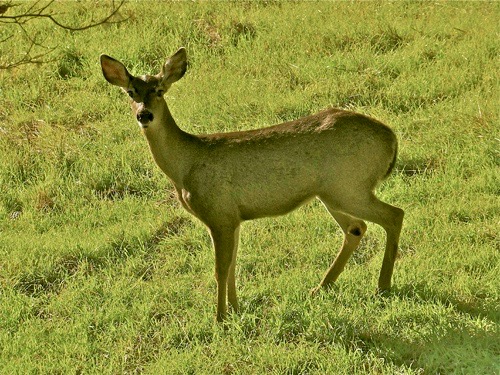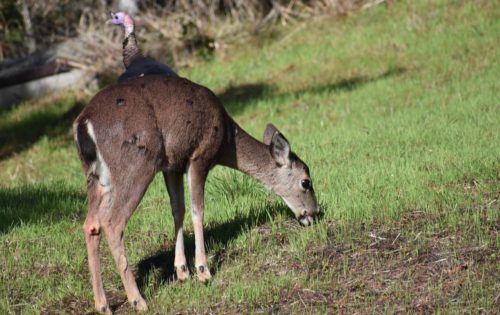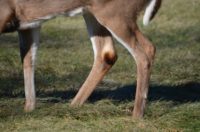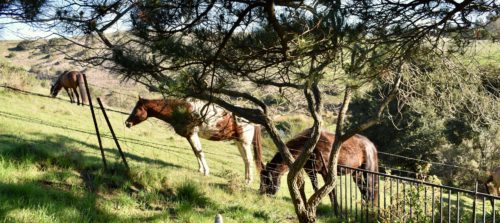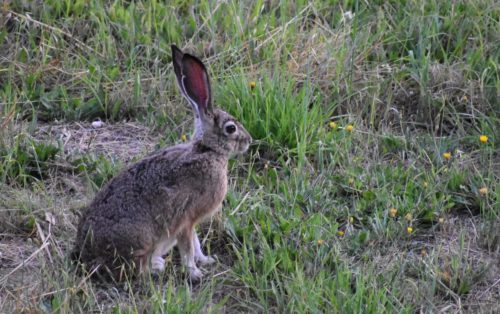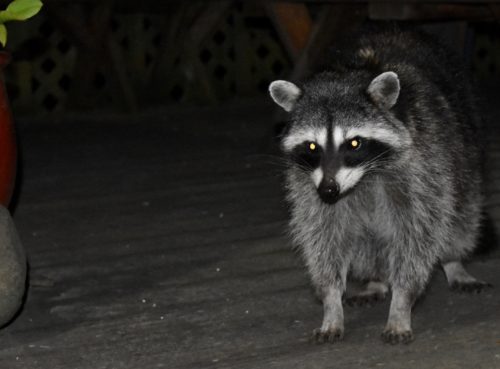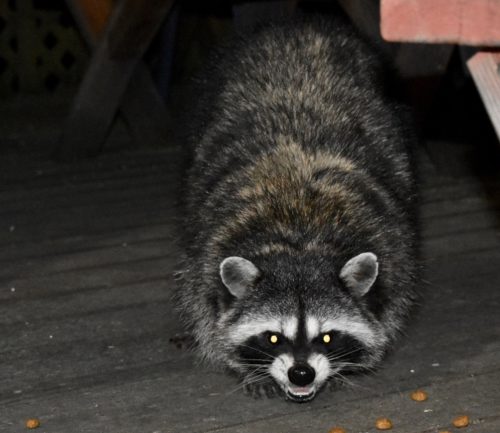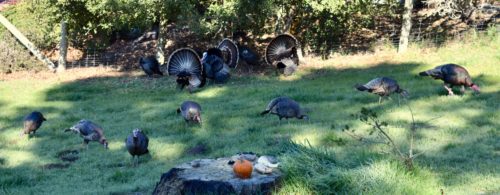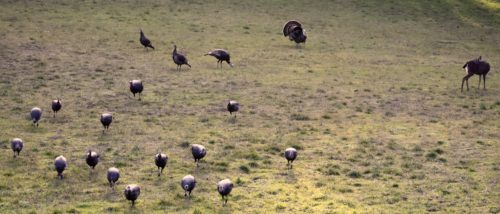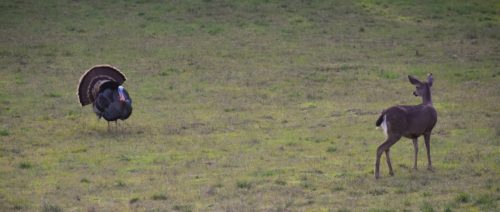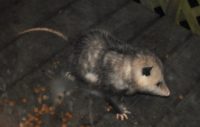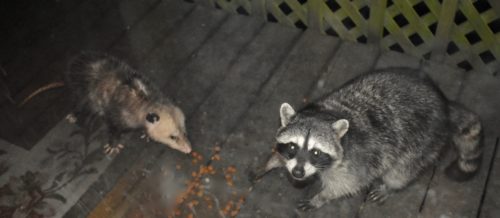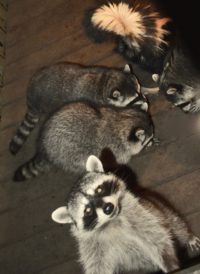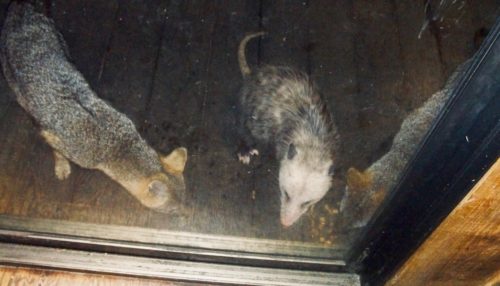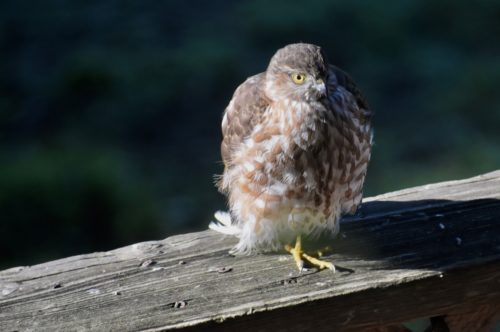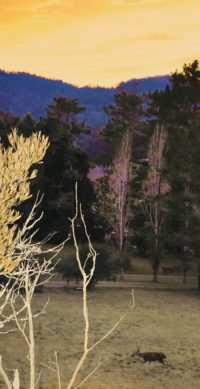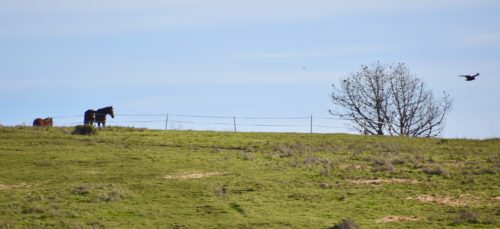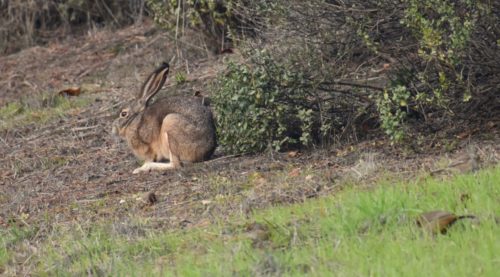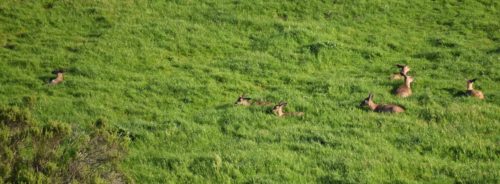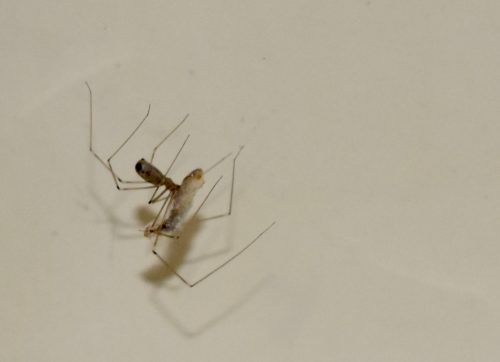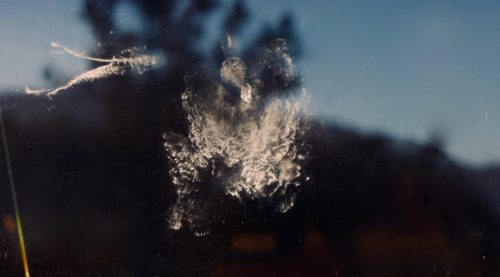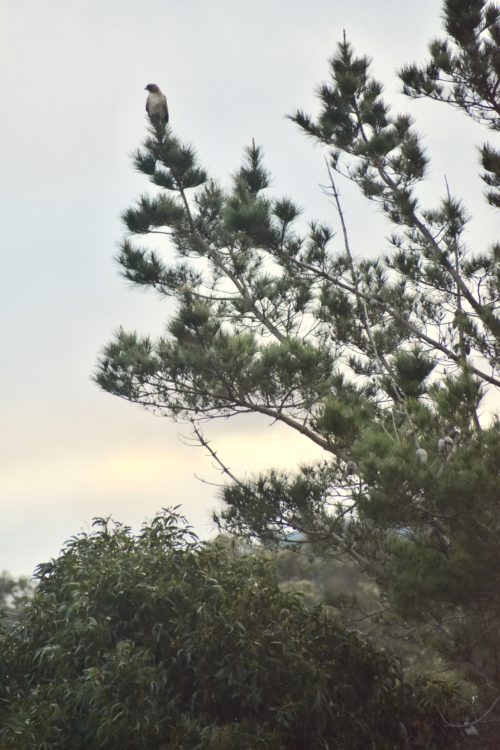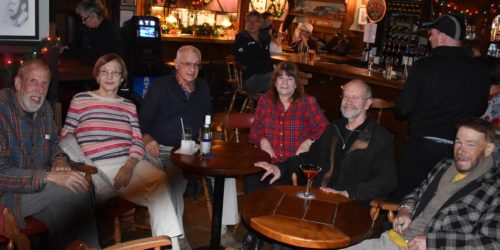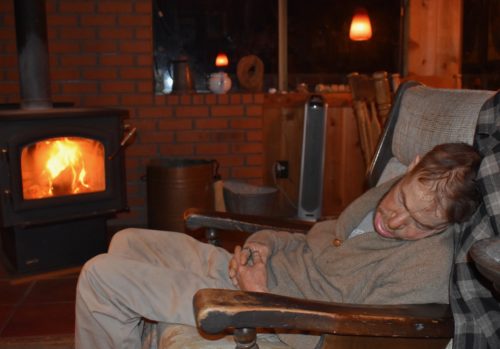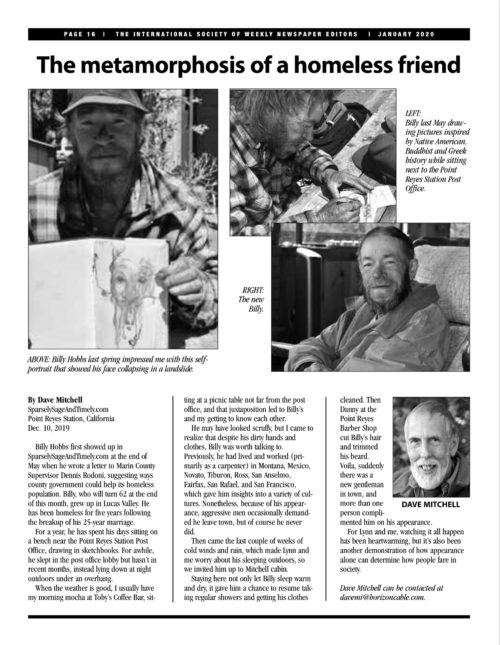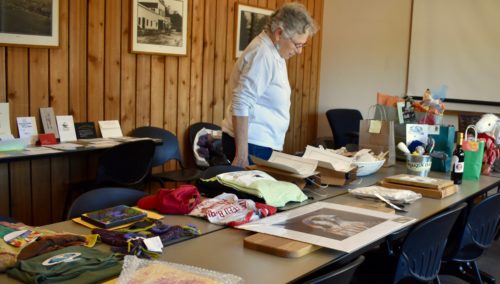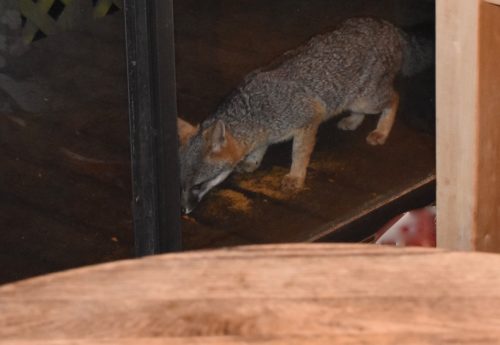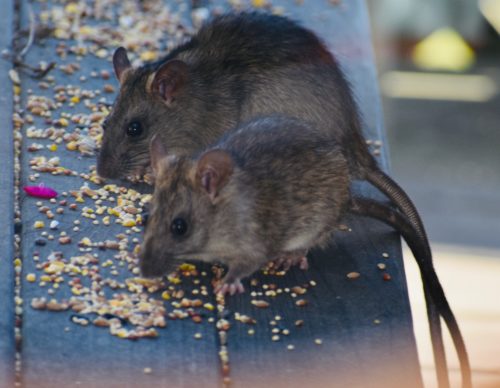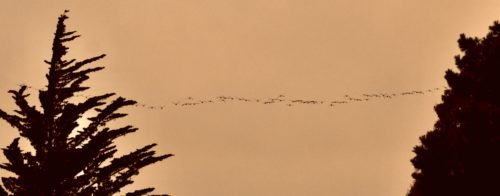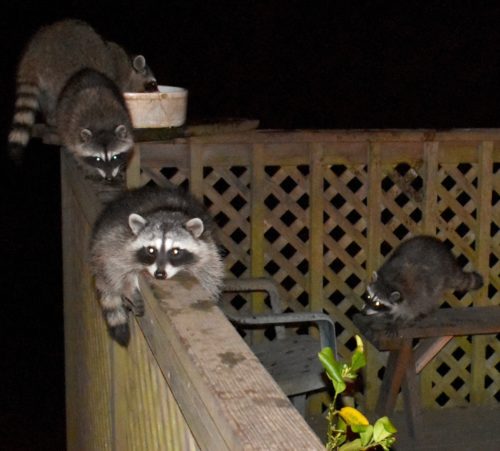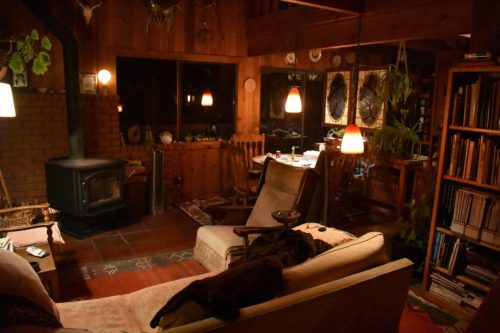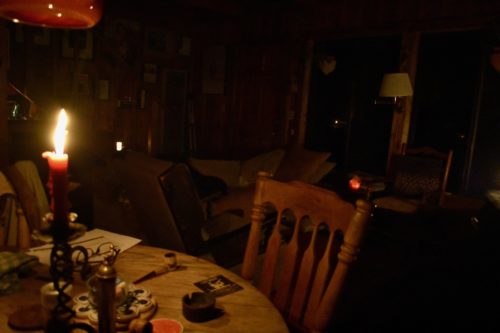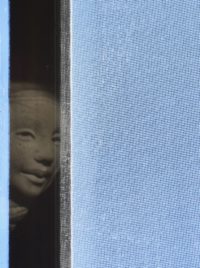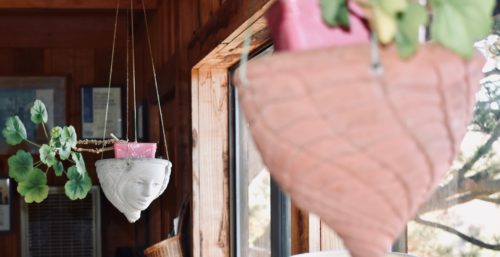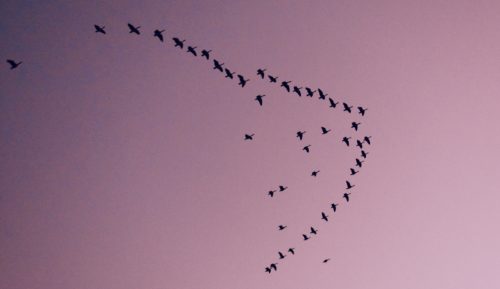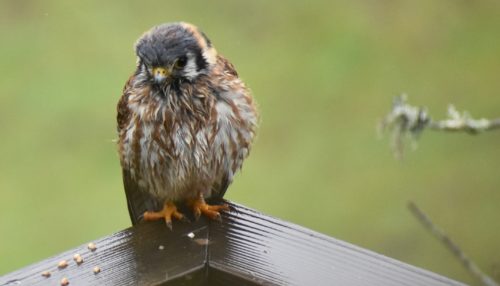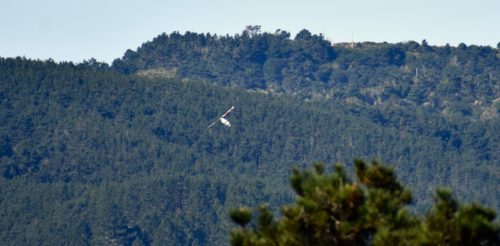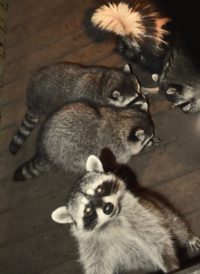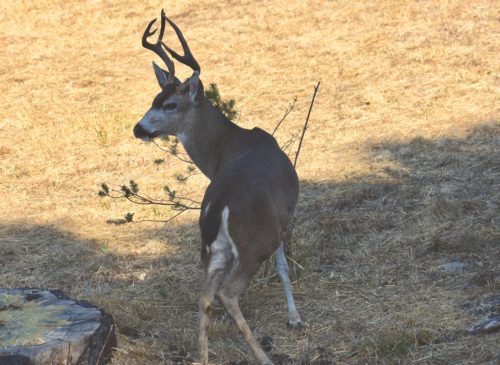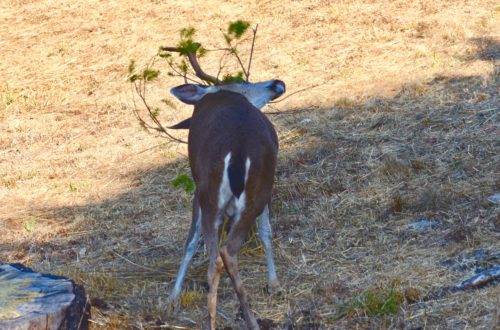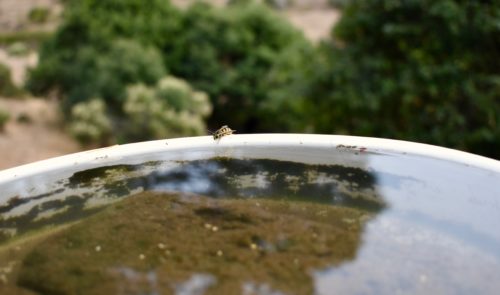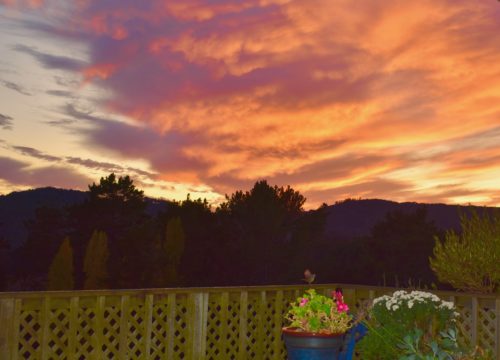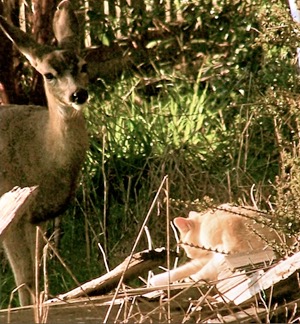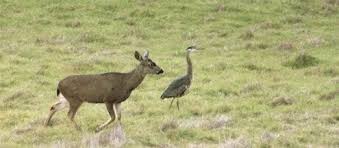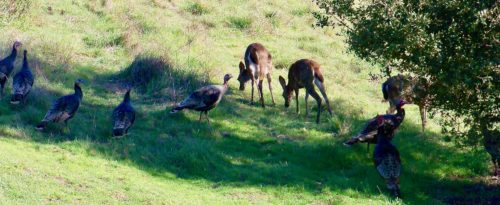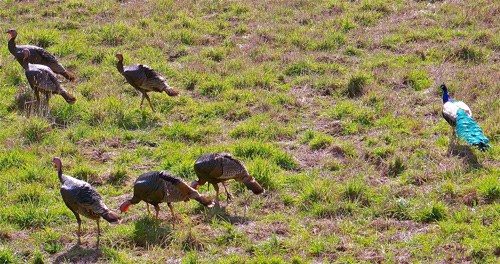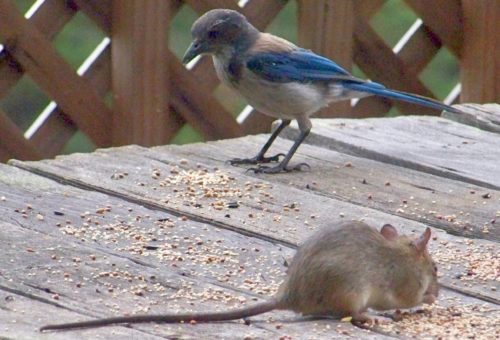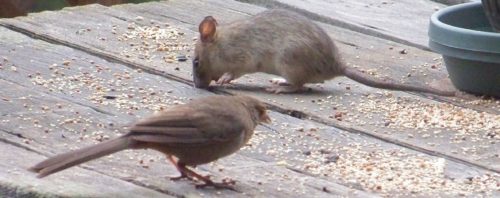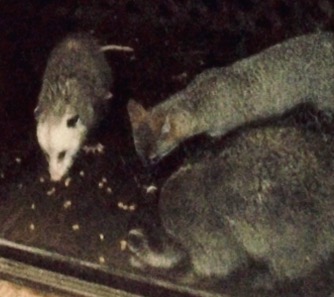Fri 8 May 2020
Surprises in a quiet fortnight
Posted by DavidMitchell under General News, History, Point Reyes Station, West Marin nature, Wildlife
Comments Off on Surprises in a quiet fortnight
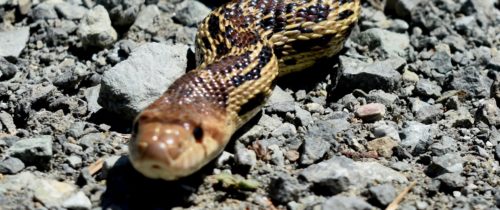
Well, hello there. In West Marin, the past couple of weeks have been full of surprises, such as this inquisitive gopher snake which greeted me as I headed down the driveway Thursday.
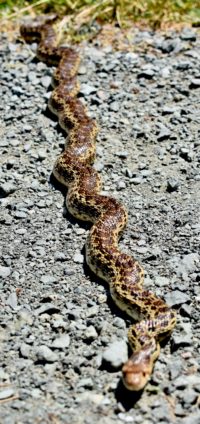
It was a good-sized snake, more than four feet long. The snake eyed me as I leaned over it but made no attempt to slither off.
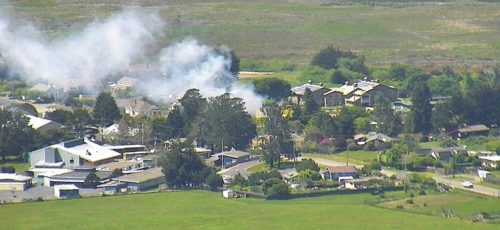
Smoke from a fire at the old Foresters Hall in Point Reyes Station drifted over the town on Friday, April 24. The blaze damaged the northeastern exterior of the landmark, including a porch and staircase. Water damage to two apartments forced the tenants to move out. (Marin County Fire provided this photo)
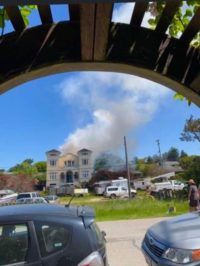
The Foresters of America, a benevolent group, opened a chapter, Court No. 219, in Point Reyes Station in 1905. Its members began designing the hall in 1916. When I arrived in West Marin 45 years ago, the building was called the Sandcastle Gallery, which Jeanne Booras and her husband Bill operated. Kathryn de Laszlo and Stephen Marshall of Petaluma now own the building. The cause of the fire has not yet been determined. (Sheriff’s artistic photo)
Another surprise. Sheriff’s deputies in Bolinas on Sunday, April 27, arrested a bicyclist allegedly toting bags of methamphetamine and armed with a loaded revolver, as well as multiple knives, on charges he had just stabbed a friend during an argument. The suspect, Derek James, 39, of Bolinas was jailed with bail set at $50,000.
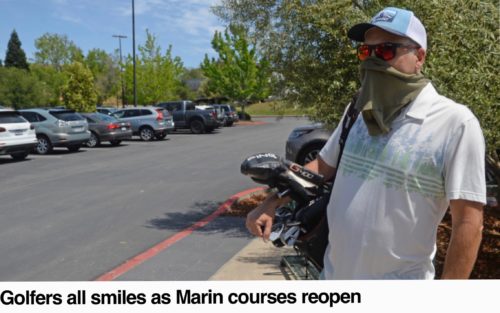
Last week, Marin County eased the coronavirus lockdown enough at golf courses to allow residents here to play but with groups limited to two people. No doubt many golfers were happy, but evidence for the Marin Independent Journal’s headline was hard to spot in its photo of golfer Nate Siedman from Bolinas.
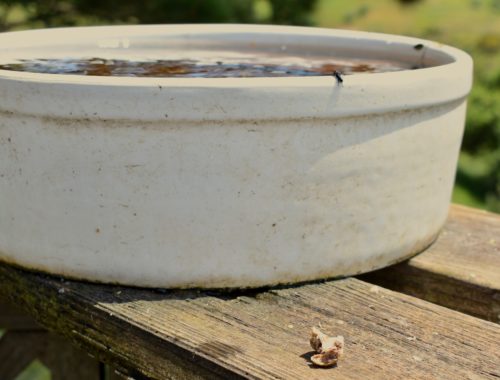
A small bone surprised us by showing up beside our birdbath Wednesday, and I’m fairly sure a raven brought it there for rinsing. From appearances, it is a chicken bone probably found in someone’s garbage.
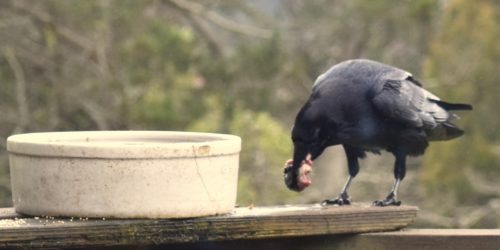
For a few years now, ravens have occasionally used our birdbath for preparing dinner. Here a raven brings a mouse’s head to the birdbath for washing.
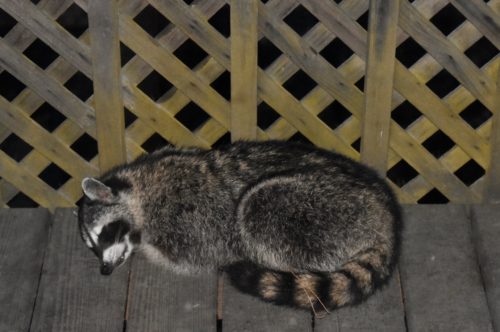
Obviously feeling at home, raccoons often take naps on our deck at night, which makes us feel, surprise, like housemates.
Caveat lectorem: When readers submit comments, they are asked if they want to receive an email alert with a link to new postings on this blog. A number of people have said they do. Thank you. The link is created the moment a posting goes online. Readers who find their way here through that link can see an updated version by simply clicking on the headline above the posting.

